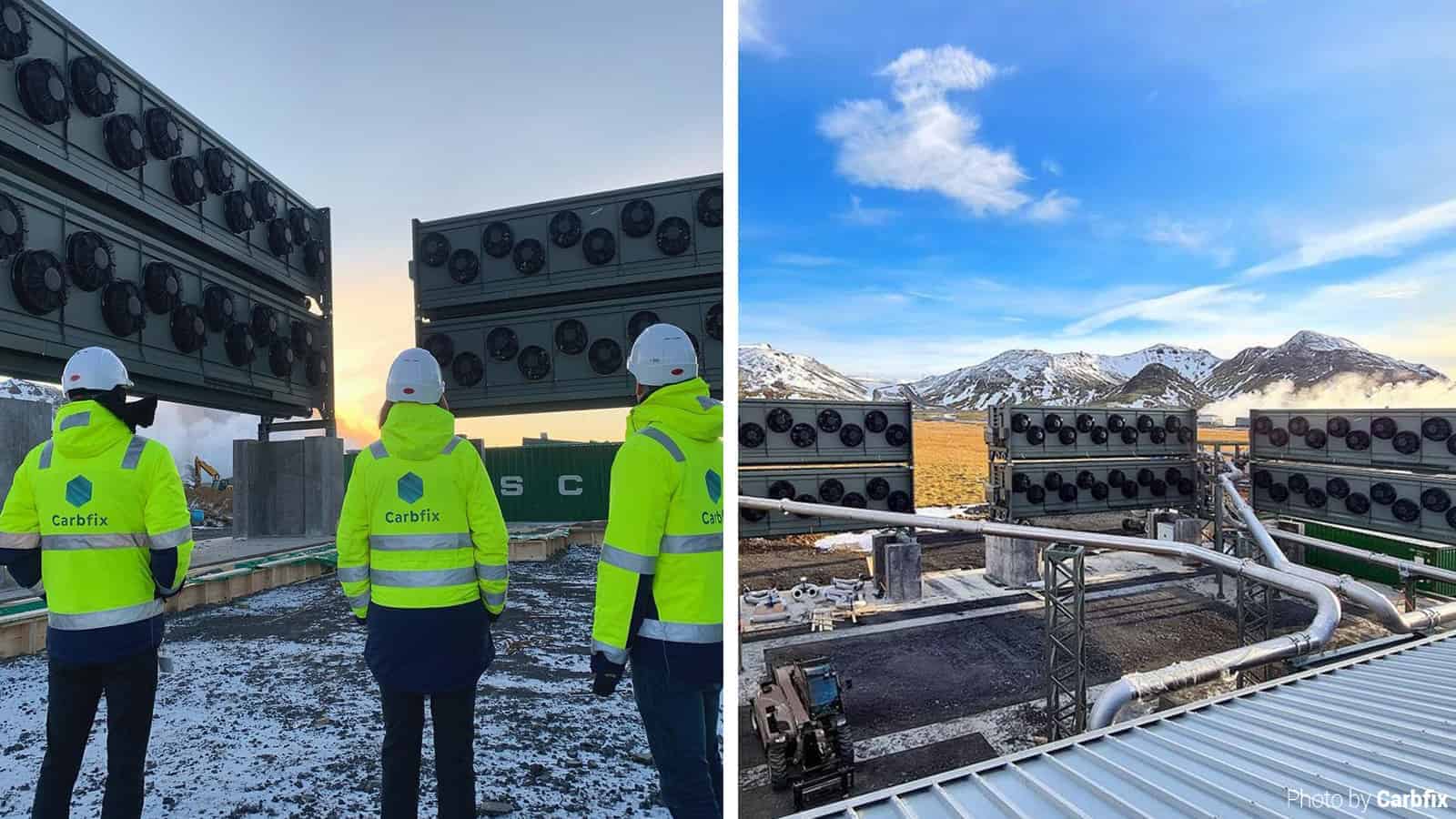Iceland-based company Carbfix recently built the world’s largest facility to capture carbon and store it safely in rocks underground. The process provides a natural, permanent solution for storing excess carbon. When it becomes scalable, this form of carbon capture could potentially help mitigate the climate crisis.
The company says the direct air capture technology can turn carbon dioxide back into rocks in less than two years. Currently, the process can pull 4,000 metric tons of CO2 from the atmosphere each year. While it only equates to taking 870 cars off the road, it’s still a step in the right direction.
Built-in the Geothermal Park in Hellisheidi, Iceland, Carbfix named this latest carbon capture project “Orca.” It’s the culmination of four years of collaboration between Carbfix and Climeworks, a Swiss company specializing in direct air capture (DAC) technology. The geothermal power plant provides the DAC units with renewable energy, while Carbfix offers a permanent solution for the captured carbon.
It works by removing CO2 from the air, separating carbon from oxygen, and collecting it in eight elongated boxes. Then, the trapped CO2 gets released from these rectangular collector boxes into a nearby processing facility. There, it’s diverted into a deep underground well, where it will remain eternally.
The collection tanks resemble the size of tractor-trailers and have large intake fans mounted to the sides. These fans help draw the air inside the collection tanks, where it’s combined with a chemical agent called a sorbent. Once the tanks get filled, a blast of heat from nearby hydrothermal vents helps release the CO2 into the processing facility.
Why basalt rocks?
As it moves underground, the carbon dioxide reacts with basalt rocks and minerals, which takes a few years. Once it’s underground, it can never become a heat-trapping atmospheric gas again. This process reverses the burning of fossil fuels, effectively capturing them and bringing them back to their source.
According to Carbfix’s website:
“Basaltic rocks are highly reactive and contain the metals needed for permanently immobilizing CO2 through the formation of carbonate minerals. They are often fractured and porous, providing storage space for the mineralized CO2. However, other reactive rocks such as andesites, peridotites, breccias and sedimentary formations containing calcium, magnesium and iron rich silicate minerals could also be feasible to do the job.”
Technology to capture carbon continues to advance but needs scaling
The fact that it takes less than two years to transform CO2 back into carbonate materials goes against prior theories. Scientists once believed it could take several hundred or thousands of years to complete this process. Hydrogen sulfides, another byproduct of burning fossil fuels, mineralizes in an even shorter timeframe – about four months.
Carbfix says that by scaling the ability to capture carbon, Europe could store about 4,000 billion tons of CO2 in rocks. The US could hold at least 7,500 billion tons. While carbon capture offers great promise to the world, it faces significant obstacles, such as high costs.
The Orca project cost about $10-15 million, a high price for removing carbon equivalent to less than 1,000 cars. However, the company says it represents an 80-fold improvement in carbon removal over the past four years. Climeworks added that companies could quickly scale and replicate the green technology as long as they have access to renewable energy and storage.
Other companies have already jumped on board to capture carbon on a large scale. Carbon Engineering, a company based in Canada, already received government funding of $25 million. They’re building a carbon capture technology to suck up carbon from the air and store it as compressed gas. Located in the American southwest, it will remove over 1 million tons of carbon dioxide from the atmosphere annually. This equates to the carbon removal of 40 million mature trees.
The company builds two types of plants: direct air capture and “air to fuels” plants. The first one keeps the carbon dioxide in the ground, while the second plant creates near-carbon-neutral fuel. It’s ideal for removing all carbon from the atmosphere, but the environment still benefits from efforts to lower emissions.
The future of carbon capture
Trees and vegetation also sequester carbon, but direct air capture facilities can accomplish this much faster. For example, it takes a newly planted tree about 50 years to offset and sequester carbon emissions. The tree could’ve died in a forest fire or other means by that time, making an effort useless. As climate change continues to spark massive wildfires, green technology used to capture carbon seems like the superior option.
While it’s still in its infancy, carbon capture technology continues to advance each year. If companies can lower costs to around $100 per ton, it could become economically feasible to scale up. It might take decades to offset expenses, but as more companies commit to eco-friendly policies, the vision may soon become a reality.
However, it will take monumental efforts from governments and industries worldwide to achieve a carbon-neutral future. Zeke Hausfather, a climate scientist, involved in charting emissions scenarios for IPCC, paints a sobering picture. He says to limit temperature rises to 1.5 degrees C by 2100. We’d have to remove about 17 gigatons of CO2 from the atmosphere. This goal represents the most optimistic scenario by the IPCC; the more likely scenario of 2 degrees C warming requires bringing emissions to near-zero by mid-century.
As it stands, the future of carbon capture remains uncertain. However, if it becomes scaleable, it presents a viable, effective strategy for combating the worst effects of climate change.
Final Thoughts on a new Iceland facility that captures carbon and stores it underground
Carbon capture technology continues to make advancements in size and scale. Recently, a Carbfix project called “Orca” went online in Iceland, marking the world’s first largest carbon capture facility. The company says it can remove around 4,000 metric tons of CO2 per year from the atmosphere. Other companies have begun investing in carbon capture technologies, providing hope for a cleaner, healthier planet.


















